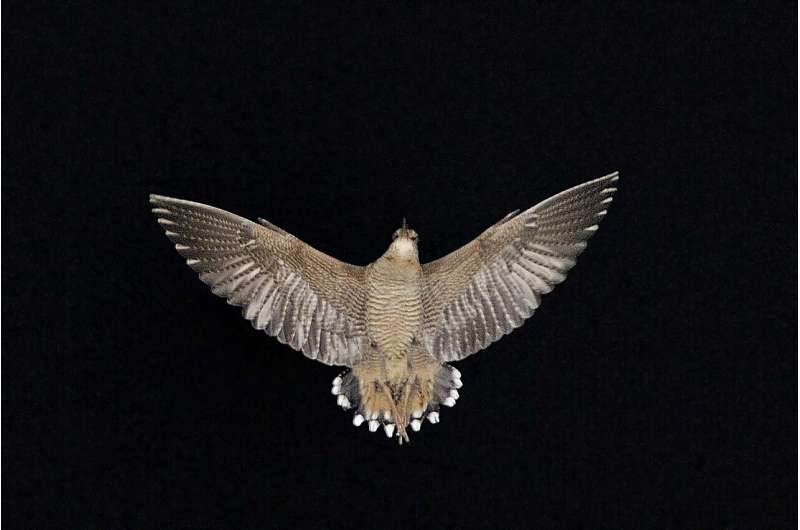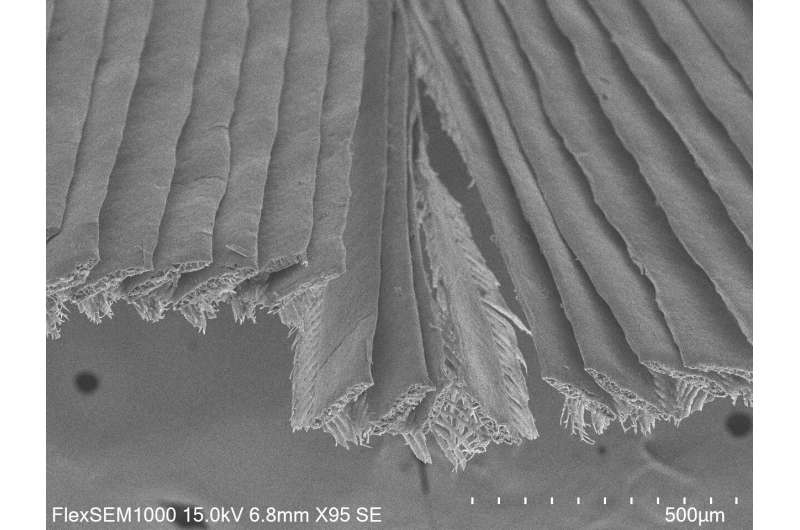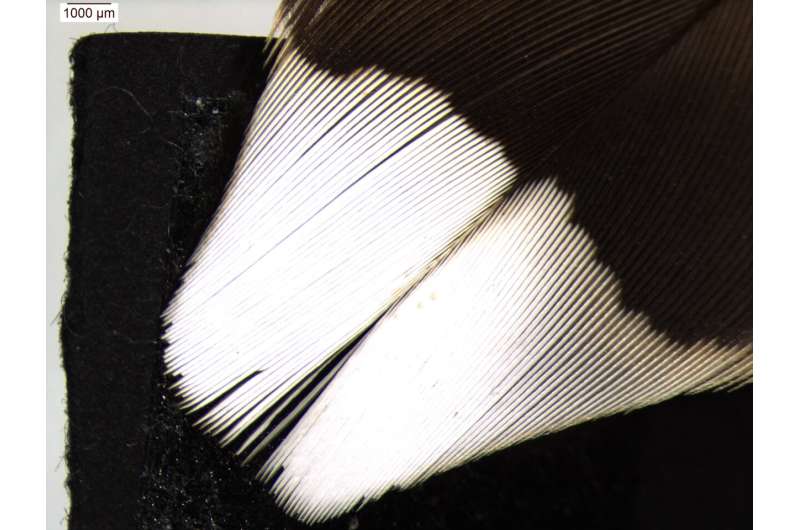Woodcocks have the brightest white feathers ever measured

The mainly brown woodcock uses its bright white tail feathers to communicate in semi-darkness, reflecting 30% more light than any other known bird.
These surprise findings, by a team led by an Imperial College London scientist, suggest there is much to learn about how birds that are most active at night or at dawn and dusk communicate.
Birds that are most active during the day often have colorful plumages, which they use to communicate information with each other. Birds that are most active at dawn and dusk or at night (“crepuscular”), such as nightjars and woodcocks, tend to have less showy plumage, as while sleeping during the day they need to be camouflaged to avoid predators.
Rather than using showy plumages, it was thought that birds active during low light conditions instead used sounds or chemicals to communicate. However, many have bright white patches, which could be used in environments with very little natural light for communication if these are reflective enough.
The Eurasian woodcock, Scolopax rusticola, is primarily mottled brown, but has patches of white feathers on the underside of its tail. This means it only shows these patches when raising its tail or during courtship display flights.

However, as they are crepuscular, and so most active during low light, these white patches need to reflect as much light as possible to attract attention. To investigate how they might do this, the team studied the white tail feathers of Eurasian woodcock specimens from a collection in Switzerland.
They used specialized microscopy to image feather structure, spectrophotometry to measure the light reflectance, and models to characterize how photons of light interact with structures inside the feather. They were surprised to find the reflectance measurements showed the feathers reflected up to 55% of light—30% more light than any other measured feather. The results are published today in the Journal of The Royal Society Interface.
Lead researcher Jamie Dunning, from the Department of Life Sciences (Silwood Park) at Imperial, said, “Bird enthusiasts have long known that woodcocks have these intense white patches, but just how white they are and how they function has remained a mystery. From an ecological perspective the intensity of the reflectance from these feathers makes sense—they need to hoover up all the light available in a very dimly lit environment, under the woodland canopy at night.”
Individual feathers are made of a central stem with protrusions called rami forming the bulk of the structure. The rami are held together by round Velcro-like “barbules.”

The team found that in the woodcock’s white tail feathers the rami are thickened and flattened, which both increases the surface area for light to bounce off, while also making it less likely light will pass between the feather barbs without being reflected.
There are two main ways surfaces are reflective. “Specular” reflection is when light bounces off a smooth surface, like a mirror. “Diffuse” reflectance scatters light rays in different directions. The thickened rami were found to be made up of a network of keratin nanofibers and scattered air pockets. This creates lots of interfaces that can scatter light, increasing the feathers’ diffuse reflectance.
Analysis of the feathers showed one final trick up the woodcock’s sleeve: the rami and barbules in the white woodcock feathers are arranged to create a venetian-blind-like effect that further enhances the surface area, by sitting at the optimum angle for light reflectance.
Principal Curator of Birds at the Natural History Museum Dr. Alex Bond said, “This research is a brilliant combination of using museum specimens and cutting-edge tools to try and understand this phenomenon. Being able to see whether closely related species or species with similar ecology also had these incredibly white feathers was a key bit of figuring out the story.”
More information:
Jamie Dunning et al, How woodcocks produce the most brilliant white plumage patches among the birds, Journal of The Royal Society Interface (2023). DOI: 10.1098/rsif.2022.0920
Citation:
Woodcocks have the brightest white feathers ever measured (2023, March 1)
retrieved 1 March 2023
from https://phys.org/news/2023-03-woodcocks-brightest-white-feathers.html
This document is subject to copyright. Apart from any fair dealing for the purpose of private study or research, no
part may be reproduced without the written permission. The content is provided for information purposes only.
For all the latest Science News Click Here
For the latest news and updates, follow us on Google News.

